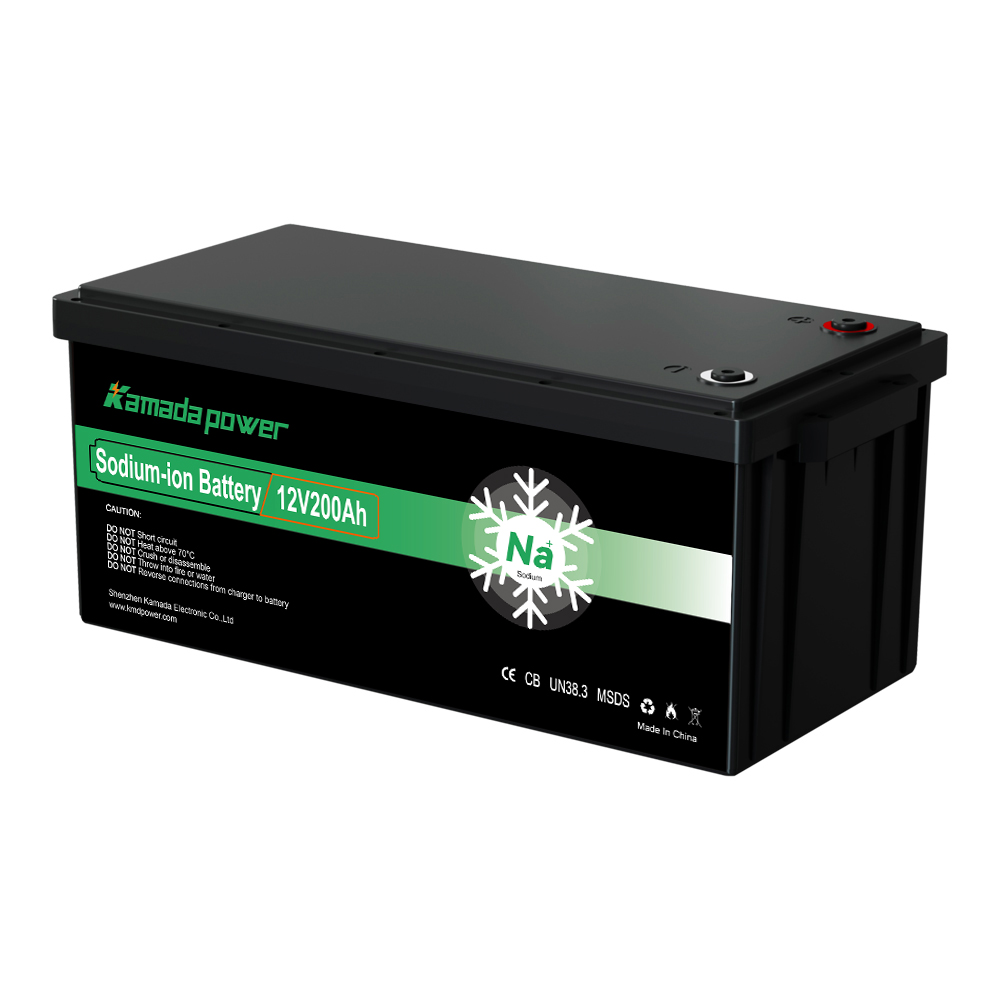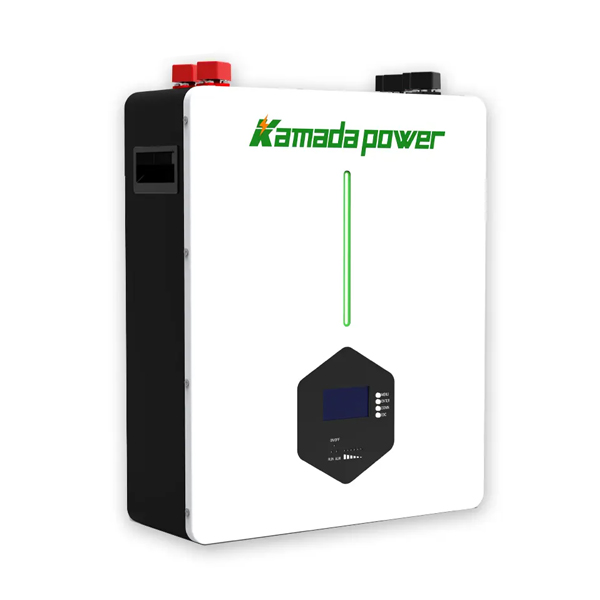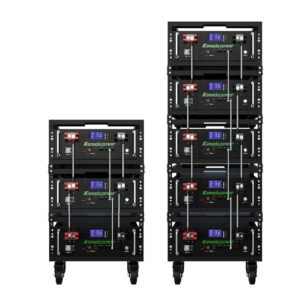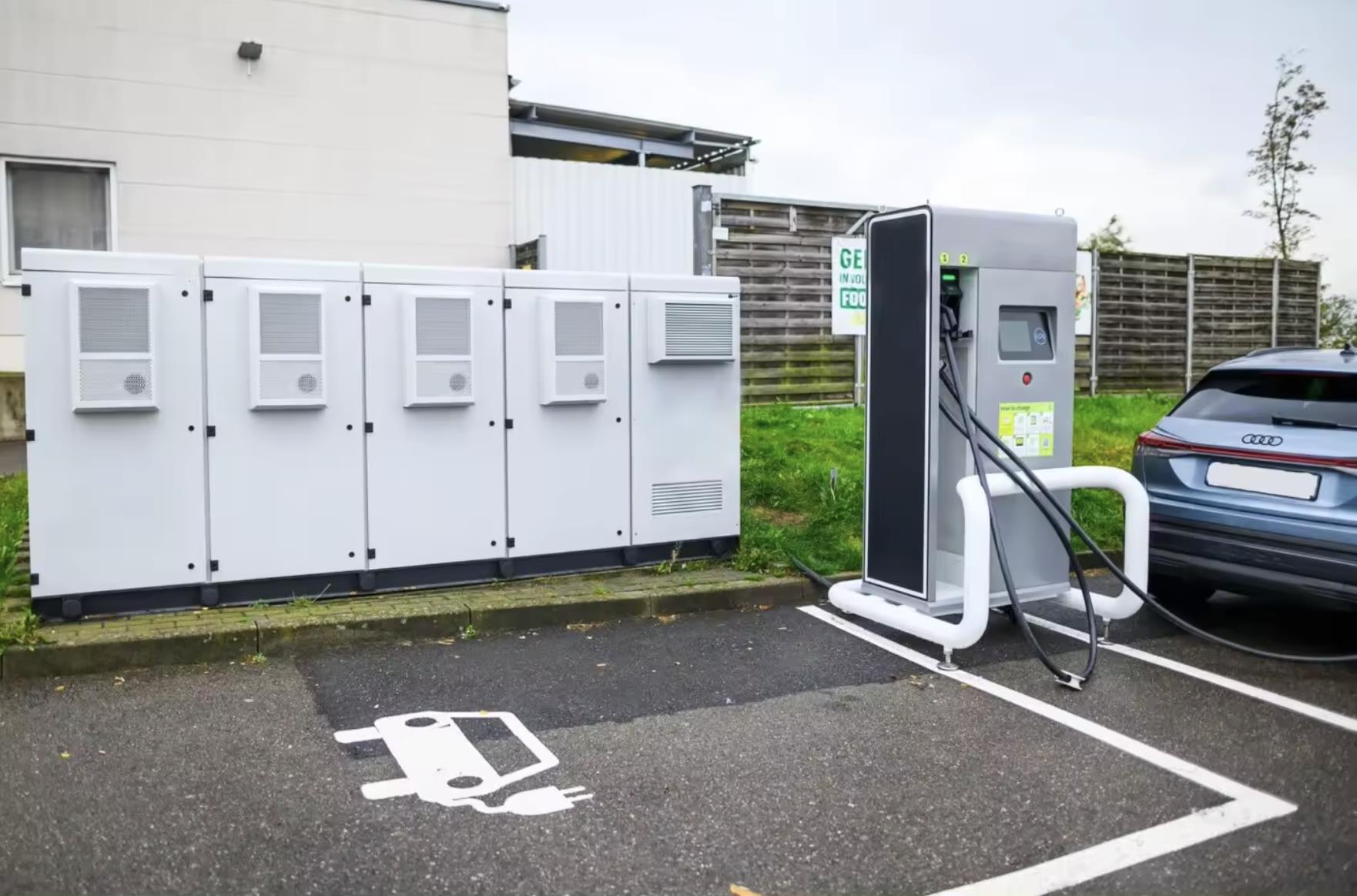Choosing the right energy storage is critical whether you’re battling power outages, high electricity costs, or seeking energy independence. Once you decide on a battery, a key fork in the road appears: the sleek Wall-Mounted Аккумулятор or the functional Server Rack-Mounted Battery. Which path is right for you?
As a china камада Мощность battery expert with over 15 years in the field, I know this choice isn’t just about looks. While both often use reliable LiFePO4 (Lithium Iron Phosphate) chemistry, their form factor dictates major differences in installation, scalability, cost, and where they fit best. This expert guide clarifies the pros, cons, and ideal uses of each, empowering you to make the smartest investment for your needs.
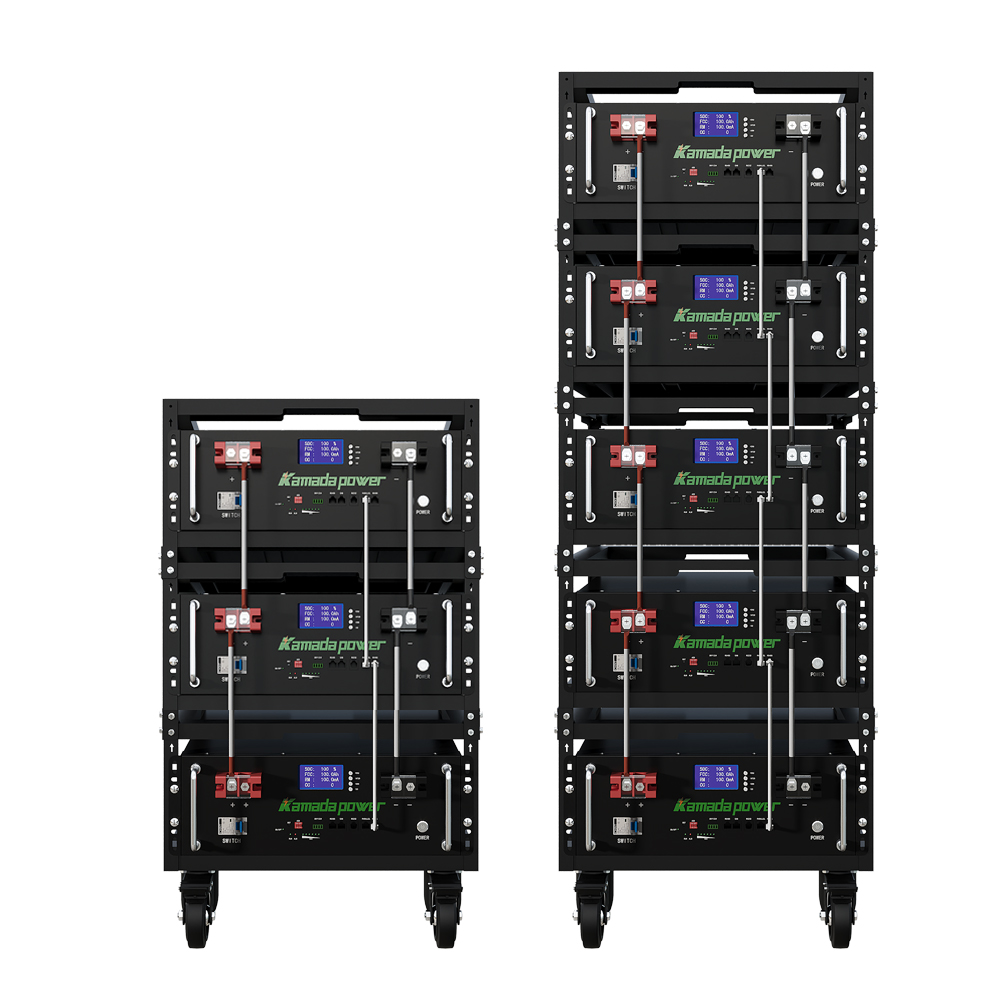
Kamada Power Server Rack-Mounted Battery
Understanding Wall-Mounted Batteries
Wall-mounted batteries prioritize aesthetics and blending into residential environments. Think of them as energy storage appliances.
Key Characteristics:
- Form Factor: Slim, vertical units mounted directly onto a sturdy wall.
- Aesthetics: Designed to look good, often matching modern home styles (e.g., Tesla Powerwall, Enphase Encharge).
- Space: Excellent floor space savers.
- Вместимость: Typically larger single units (5 kWh – 15+ kWh).
- System: Can be all-in-one (integrated inverter) or require specific compatible inverters. Often uses safe LiFePO4 chemistry.
Плюсы:
- Superior Aesthetics: Best choice for visible locations like garages or well-kept utility areas.
- Saves Floor Space: Utilizes otherwise empty wall area.
- Often Quieter: Many use passive cooling or very quiet internal fans.
Конс:
- Strict Installation Needs: Requires a strong, load-bearing wall. Professional assessment is vital due to significant weight (often 200-300 lbs / 90-135 kg+). Improper mounting is a safety hazard.
- Limited Scalability: Adding capacity means mounting another large, potentially awkward unit, consuming more wall space.
Ideal Use Case: Homeowners prioritizing aesthetics, those with limited floor space but verified sturdy walls, and standard residential backup/solar self-consumption needs where future large-scale expansion is unlikely.
Understanding Server Rack-Mounted Batteries
Server rack batteries emphasize function, modularity, and cost-effectiveness, originating from reliable data center designs.
Key Characteristics:
- Form Factor: Standardized modules (fitting 19-inch racks, common heights like 3U or 4U) designed for vertical stacking within a rack enclosure.
- Modularity: Core strength; uses smaller modules (typically 2.5 kWh – 5 kWh each) for easy combination and granular sizing.
- Scalability: Highly flexible; easily add modules in the future as energy needs grow (e.g., adding an EV charger or more solar panels).
- Space: Requires dedicated floor space for the rack itself (footprint often around 2’x2′ to 2’x3′ / ~0.6m x 0.6m to 0.6m x 0.9m).
- System: Needs a separate rack enclosure, a compatible inverter, and a Battery Management System (BMS) to manage the modules and communicate with the inverter. Primarily uses safe LiFePO4. Offers great system design flexibility. (Examples relevant in the US market include EG4, Pylontech, Fortress Power eFlex, Kilovault).
Плюсы:
- Excellent Scalability: Easily add capacity later without major disruption.
- Easier Service (Potentially): Individual modules can potentially be diagnosed and replaced, possibly avoiding full system replacement.
- High Density: Packs significant energy storage into a relatively small floor footprint using standard rack heights.
Конс:
- Requires Floor Space & Rack: Needs dedicated, accessible floor area and the additional cost of a suitable rack enclosure.
- Industrial Look: Functional aesthetics are not suitable for visible living areas; best for garages, basements, utility closets, or dedicated equipment rooms.
- Ventilation Needs: Dense stacking requires good airflow. Poor ventilation can shorten battery life and impact performance, especially in warm climates or under heavy load. Consider the installation environment carefully.
Ideal Use Case: Users needing large initial capacity or planning future expansion; those with dedicated utility space; budget-conscious buyers prioritizing $/kWh; small businesses needing backup; off-grid systems;
Key Differences: Wall-Mounted vs. Rack-Mounted Battery
This table highlights the core trade-offs to help you compare directly:
| Характеристика | Wall-Mounted Battery | Server Rack-Mounted Battery | Expert Takeaway / Consideration |
|---|---|---|---|
| Установка | Vertical wall mount; Needs strong wall check | Floor-standing rack; Needs floor space | Wall structural integrity is paramount vs. Floor space & access |
| Space Usage | Saves floor space | Requires floor footprint | Prioritize based on your available space type (wall vs. floor) |
| Aesthetics | High (designed for visibility) | Low (Functional, for utility spaces) | Critical for visible areas vs. unimportant for hidden spaces |
| Масштабируемость | Limited/Complex | Excellent/Modular | Rack wins for future-proofing energy needs. |
| Охлаждение | Often Integrated/Passive | Module fans/Rack airflow may be needed | Consider ambient temps & ventilation needs for rack systems |
| Serviceability | Often unit replacement likely | Module-level replacement possible | Rack potentially easier/cheaper to repair long-term |
| Safety Standards | Look for UL 9540 / UL 1973 | Look for UL 1973 (module), UL 9540 (system) | Non-negotiable for safety, code compliance & insurance. |
Making the Right Choice: Key Questions to Ask Yourself
There’s no single “best” answer. The right battery format depends entirely on Ваш specific situation. Ask yourself these critical questions:
- Assess Your Space & Location: Where exactly can the battery go? Do you have a verified strong wall? Or do you have clear, ventilated floor space (approx. 2’x3′) in a suitable location (data center,garage, basement, utility room)? Ensure easy access for installation and potential service.
- Define Current & Future Energy Needs: How many kWh do you need сейчас? Crucially, do you anticipate needing подробнее later (EV charging, more solar, changing usage patterns)? If future growth is likely, the rack system’s scalability is a major advantage.
- Prioritize Aesthetics vs. Functionality/Cost: How visible will the battery be? If it’s in a main living area or highly visible space, aesthetics might drive you to a wall unit. If it’s hidden, the rack’s cost-effectiveness and scalability often become more important.
- Calculate Total Cost of Ownership (TCO): Look beyond the initial battery price. Factor in the inverter cost (if separate), rack enclosure (for rack systems), professional installation labor (which can vary significantly), and potential long-term serviceability differences.
- Check Inverter Compatibility: What solar or hybrid inverter do you have or plan to use? Wall units might have limited compatibility. Rack systems offer more choice but demand rigorous verification that the inverter and the battery’s specific BMS communication protocol (e.g., CANbus, RS485) are explicitly compatible. Don’t guess!
- Evaluate Installation Complexity & Your Role: Remember, all battery installations require qualified electricians due to safety risks (high voltage DC, significant weight, local codes). However, be aware that rack systems involve more physical assembly and configuration steps compared to potentially simpler (though still complex) wall unit installations.
Expert Recommendations & Common Pitfalls to Avoid
Based on years of seeing these systems deployed in the US:
- Go Wall-Mounted if: Aesthetics are a top priority, floor space is nonexistent (but you have a verified strong wall), your capacity needs are well-defined and unlikely to increase significantly, and you prefer an integrated, appliance-like solution often within a specific brand’s ecosystem.
- Go Server Rack if: Scalability for future growth is important or likely, you have suitable dedicated utility space, maximizing capacity per dollar (cost per kWh) is a key driver, you need a large amount of storage, or you value flexibility in choosing compatible inverters (and commit to verifying that compatibility).
Avoid These Common Mistakes:
- Underestimating Wall Strength: Assuming any wall is adequate for a heavy wall-mounted battery is a frequent and dangerous mistake. Always get a professional structural assessment before purchasing.
- Ignoring Rack Ventilation: Stifling rack batteries in tight, unventilated spaces drastically shortens their lifespan and hurts performance due to heat buildup. Ensure adequate airflow or active cooling as needed for the specific installation environment.
- Skipping Thorough BMS/Inverter Compatibility Checks: This is a primary source of frustration and system malfunctions, especially with rack systems. “Should work” isn’t good enough. Confirm the exact battery model and inverter model are listed as compatible by manufacturers, paying close attention to required firmware versions and communication protocols.
My Final Word: Prioritize безопасность above all else. Insist on products meeting recognized safety standards (UL 1973, UL 9540) and always use qualified, licensed electricians experienced with battery storage systems for installation. Focus on long-term value by choosing the system that best aligns with your specific space, budget, current and future energy goals.
ЧАСТО ЗАДАВАЕМЫЕ ВОПРОСЫ
- Q1: Can you mix wall-mounted and rack-mounted batteries in one system?
- A: Ни в коем случае. They operate at different voltages, use different Battery Management Systems (BMS), and have incompatible communications. Mixing is impractical, unsafe, and will void warranties. Stick to one type per system.
- Q2: Are server rack batteries safe for home use?
- A: Да, when specific conditions are met: using reputable LiFePO4 modules with proper safety certifications (UL 1973 minimum), installed correctly by a qualified professional according to all electrical codes, placed in a suitable non-living space (garage, basement, utility room) with adequate clearances and ventilation.
- Q3: Which battery type lasts longer?
- A: Lifespan depends primarily on the battery chemistry quality (good LiFePO4 offers 10-15+ years / 4000-6000+ cycles potential), usage patterns (depth of discharge, temperature), and BMS quality, not the physical form factor itself. Both types predominantly use long-lasting LiFePO4 today.
- Q4: Is installation cheaper for wall or rack batteries?
- A: It varies greatly depending on site specifics, labor rates, and system complexity. Wall mounts avoid rack costs but need structural verification and careful mounting. Racks need assembly but module handling might be simpler. Always get detailed, site-specific quotes from qualified installers for both scenarios.
- Q: Do rack batteries need special inverters?
- A: They need compatible inverters. While rack batteries often work with a wider range of inverters, you MUST verify the inverter supports the battery’s specific voltage range and, crucially, its BMS communication protocol (e.g., CANbus, RS485). Check manufacturer compatibility lists diligently.
Заключение
Ultimately, the choice between a wall-mounted battery and a server rack-mounted battery isn’t about which is universally “better,” but which is the optimal match for your unique circumstances.
- Wall-mounted batteries offer undeniable aesthetic appeal и space-saving benefits, making them ideal for homeowners prioritizing visual integration and facing floor space constraints, provided their energy needs are relatively stable.
- Server rack batteries shine with their exceptional масштабируемость, and system flexibility, serving users who need large or growing capacity, have dedicated utility space, and prioritize long-term adaptability and value.
kamada power professional wall mounted battery manufacturers in china и server rack mounted battery manufacturers in china. Контактная информация kamada power получить цитату.


